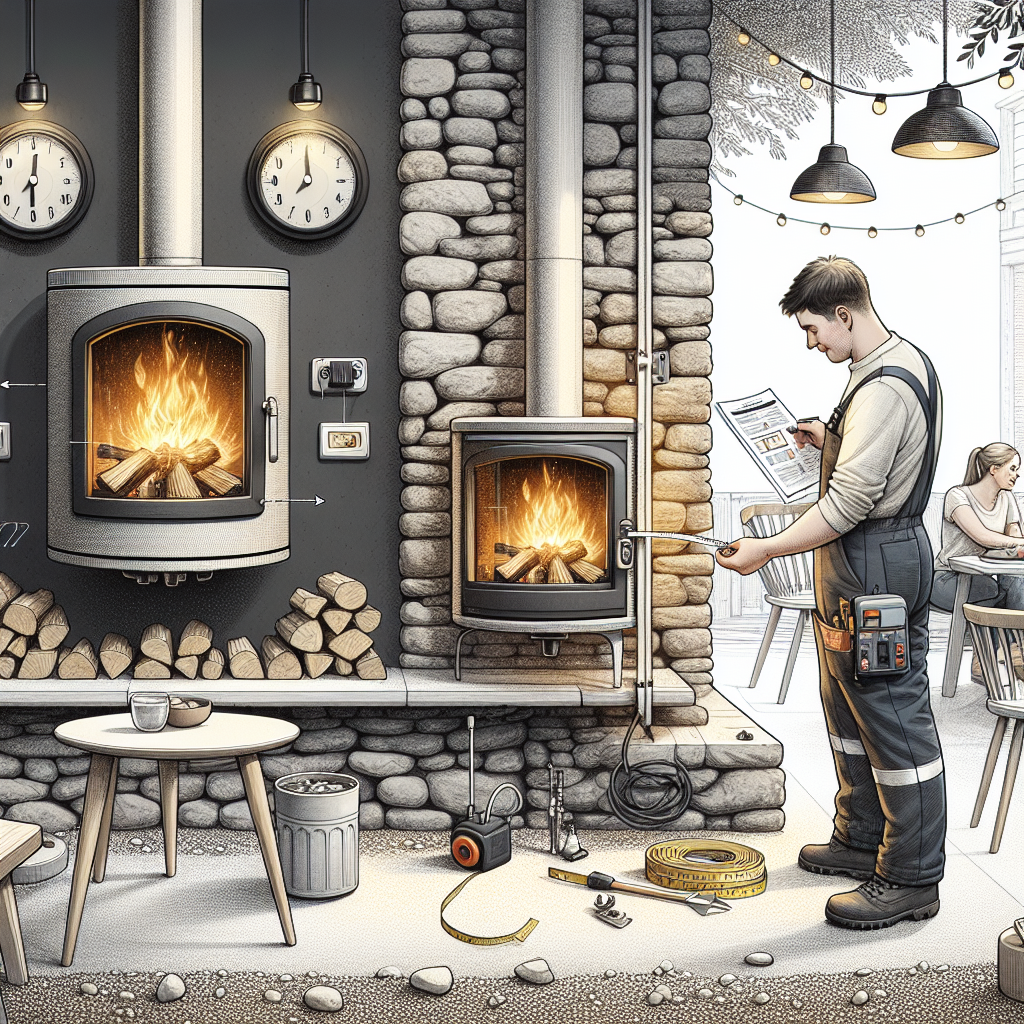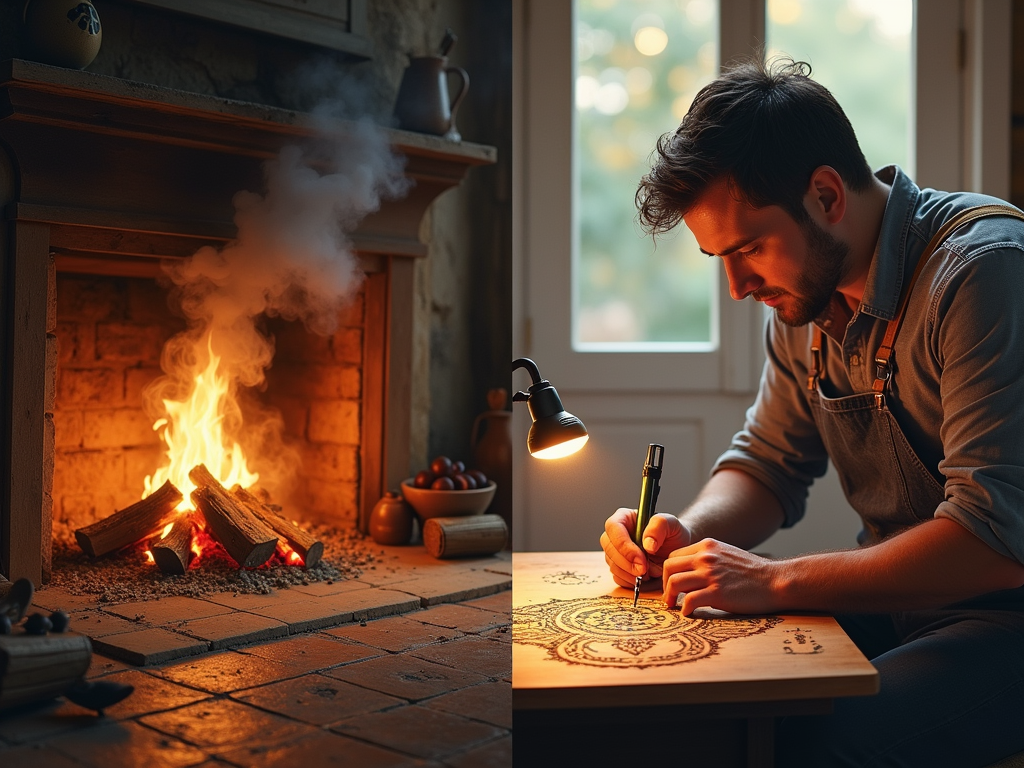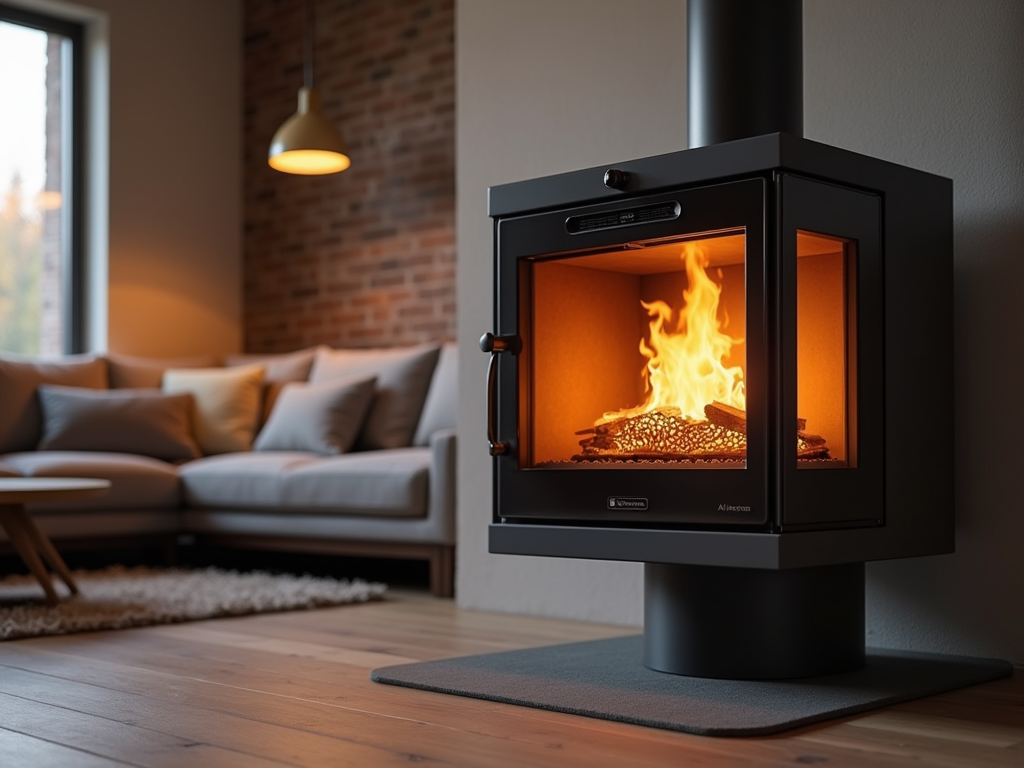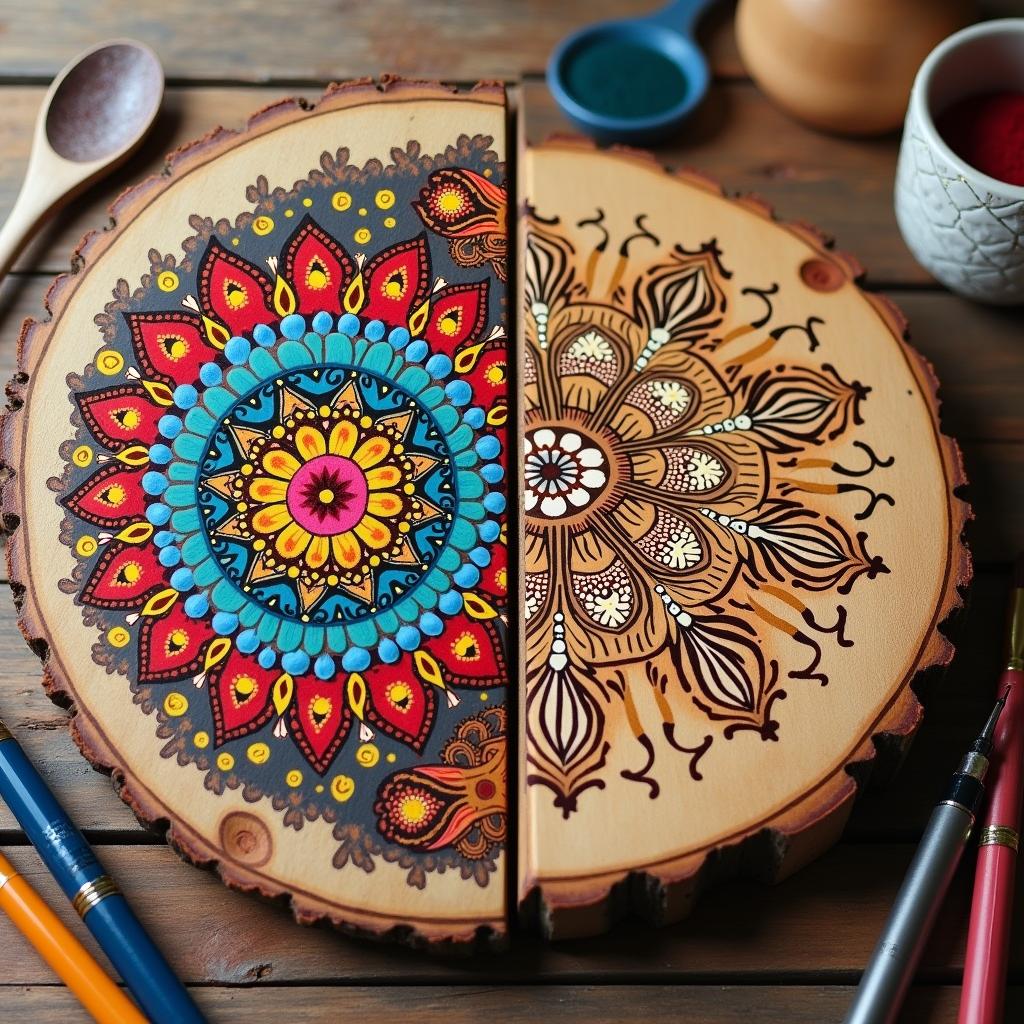Wood burning has evolved far beyond its traditional roots, transforming from basic heating into an efficient, eco-conscious choice for home heating and artistic expression. Modern wood-burning systems deliver exceptional performance that outshines traditional fireplaces in both heating power and environmental impact.
Key Takeaways
- Higher Heat Output: Modern wood stoves generate 40,000-80,000 BTUs compared to traditional fireplaces’ 5,000-20,000 BTUs, using only one-third of the wood.
- Cost Savings: EPA-certified units can reduce annual firewood costs from $800 to $270-$400 through improved efficiency.
- Safety Considerations: Professional installation and regular maintenance are crucial, with proper clearances and annual inspections required.
- Lower Emissions: Modern wood-burning systems produce significantly fewer emissions (2.0-4.5 grams/hour) compared to traditional fireplaces (30-50 grams/hour).
- Smart Technology: Integration of smart technology allows for precise temperature control and remote monitoring in modern wood-burning systems.
Enhanced Efficiency and Environmental Impact
The stark contrast between old and new becomes clear in the efficiency ratings. EPA-certified units achieve 70-83% efficiency, whereas traditional fireplaces typically range from 10-60%. This translates into substantial cost savings and a smaller environmental footprint.
The advancement in technology has created heating solutions that blend the timeless appeal of wood fire with modern performance standards.
The Hidden Costs of Decorative vs Traditional Wood Burning
Efficiency and Heat Output Differences
Traditional wood burning in open fireplaces can be quite wasteful, with efficiency ratings ranging from just 10% to 60%. I’ve seen many homeowners surprised to learn that most of their heat literally goes up the chimney. In contrast, modern wood burning methods and appliances demonstrate remarkable improvements, achieving efficiency ratings between 70% and 83% according to EPA data.
The heat output difference between these methods is striking. A traditional open fireplace typically produces between 5,000 to 20,000 BTUs of heat, while an EPA-certified wood stove can generate 40,000 to 80,000 BTUs. That’s up to four times more heat from the same amount of wood.
Cost Impact on Home Heating
The financial implications of choosing between decorative and traditional wood burning are significant. Proper wood burning techniques in modern stoves can cut fuel consumption by up to 50% compared to traditional fireplaces. Here are the key factors affecting costs:
- Fuel efficiency: Modern stoves use 1/3 of the wood needed by traditional fireplaces for the same heat output.
- Operational costs: Lower wood consumption means fewer chimney cleanings and reduced maintenance.
- Heat distribution: Better heat circulation reduces the need for supplemental heating.
- Insurance considerations: Some providers offer lower rates for EPA-certified units.
Decorative options like outdoor fire pits and tabletop units provide minimal measurable heat output, making them purely aesthetic choices. While these units can create wonderful ambiance for home decor and outdoor spaces, they shouldn’t be considered as heating solutions.
The EPA’s efficiency ratings show that investing in a modern wood-burning system can pay for itself through reduced wood consumption within 2-3 heating seasons. For example, if you currently spend $800 annually on firewood for a traditional fireplace, switching to a modern stove could reduce that cost to around $270-$400 per year.
Temperature control also plays a crucial role in cost efficiency. Modern stoves offer better heat regulation capabilities, allowing for consistent temperature maintenance without constant fuel addition. This improved control means less wasted fuel and more comfortable living spaces.
I’ve found that many homeowners overlook the long-term savings potential when making their initial purchase decisions. While decorative units might have lower upfront costs, their inefficiency can lead to significantly higher operational expenses over time. By considering both the immediate and long-term financial impact, you can make an informed decision that aligns with your heating needs and budget constraints.
Safety First: Essential Installation and Maintenance Requirements
Professional Installation Guidelines
I can’t stress enough how crucial proper installation is for traditional wood-burning units. The National Fire Protection Association reports over 25,000 chimney fires annually in the US, making safety paramount. A certified professional should handle the installation to ensure all specifications are met, particularly for traditional wood burning installations.
Clearance requirements demand strict attention – wood stoves need at least 36 inches of space from combustible materials, including walls and furniture. This distance can be reduced with proper heat shields, but should never be compromised without professional guidance.
For outdoor fire pits, placement is critical. They should sit on non-combustible surfaces like concrete or stone, and maintain a minimum 10-foot distance from any structures, trees, or shrubs. I recommend creating a clear zone around the pit using gravel or pavers to mark safe boundaries.
Maintenance and Safety Equipment
Here are the essential safety measures for traditional wood burning setups:
- Install carbon monoxide detectors on every floor
- Place smoke alarms in all bedrooms and common areas
- Schedule professional chimney inspections annually
- Clean chimneys when creosote buildup reaches 1/8 inch
- Keep a Class A fire extinguisher within easy reach
Regular maintenance prevents dangerous creosote accumulation, which can lead to serious safety issues. The NFPA data shows that neglected chimneys are the leading cause of home heating fires. I recommend scheduling professional cleanings before each burning season and monitoring creosote buildup throughout winter months.
For decorative wood burning enthusiasts, safety requirements focus more on proper ventilation and personal protective equipment. While the risks are different from traditional wood burning, proper safety measures remain essential. Setting up in a well-ventilated area and using appropriate heat-resistant surfaces protects both the artist and their surroundings.

Environmental Impact and Emission Concerns
Traditional wood burning in fireplaces creates serious environmental challenges that modern decorative wood burning techniques have largely solved. As someone who’s spent years practicing various wood burning methods and styles, I can share key insights about these environmental differences.
Emission Levels and Air Quality Impact
Traditional fireplaces release substantial amounts of particulate matter into the air, producing between 30-50 grams per hour according to EPA measurements. This stands in stark contrast to EPA-certified wood stoves, which emit just 2.0-4.5 grams per hour – a dramatic reduction that highlights the environmental benefits of modern burning techniques.
The pollutants from traditional wood burning include several harmful components that affect air quality:
- PM2.5 (fine particulate matter) that can penetrate deep into lungs
- PM10 (larger particles) that cause respiratory irritation
- Carbon monoxide emissions that pose serious health risks
- Volatile organic compounds that contribute to smog formation
Modern decorative wood burning tools and techniques have transformed this landscape. By incorporating catalytic converters and secondary burn chambers, newer systems significantly reduce harmful emissions. These improvements align with the EPA’s 2020 standards, which mandate stricter emission limits for wood-burning devices.
The catalytic converters work by converting smoke particles into heat and carbon dioxide at lower temperatures, while secondary burn chambers create optimal conditions for complete combustion. These technological advances mean that creating beautiful wood-burned designs doesn’t come at the expense of air quality.
The controlled nature of decorative wood burning also means better efficiency in wood use. While traditional fireplaces often waste up to 80% of the wood’s potential energy, modern wood-burning techniques make full use of materials with minimal waste. This efficiency translates to less environmental impact and better resource management.
I’ve noticed that as awareness of environmental issues grows, more artists and craftspeople are switching to cleaner burning methods. This shift hasn’t just benefited the environment – it’s sparked innovation in decorative wood burning designs and techniques, proving that environmental responsibility and artistic expression can go hand in hand.
For those starting their wood burning journey, understanding these environmental considerations is crucial. While learning to avoid common wood burning mistakes, it’s equally important to choose equipment that meets current environmental standards. This approach ensures that your creative pursuits don’t negatively impact air quality or contribute to environmental pollution.
The historical progression from traditional to modern methods shows how far we’ve come in combining artistic wood burning with environmental consciousness. By embracing these cleaner technologies, artists can create stunning pieces while maintaining their commitment to environmental stewardship.

Understanding Wood Fuel Requirements
Essential Wood Selection and Storage
I’ve found that decorative wood burning and traditional wood burning have significant differences in their fuel needs. While decorative wood burning techniques typically use smaller, specialized wood pieces, traditional wood burning demands substantial quantities of seasoned firewood.
Seasoned wood, with moisture content below 20%, burns much more efficiently than unseasoned wood. You’ll notice seasoned wood has visible cracks in the ends and makes a clear “clunk” sound when pieces are knocked together. In contrast, green or unseasoned wood creates excessive smoke and reduces heat output by up to 25%.
Wood Storage for Optimal Burning
Here’s what you need to know about storing wood properly:
- Store wood off the ground using pallets or blocks
- Stack wood in single rows with space between for airflow
- Keep wood covered on top but leave sides exposed
- Allow 6-12 months for proper seasoning
Cost and Heat Output of Cordwood
The cost of cordwood varies significantly by region:
- Northeast US: A cord of seasoned hardwood typically costs $200-300
- Pacific Northwest: Prices range from $150-200 per cord
- Southern States: Lower prices, averaging around $150 per cord
When considering heat output, hardwoods like oak and maple provide the best value, generating about 25 million BTUs per cord. Pine and other softwoods produce roughly 15 million BTUs per cord but can be useful for decorative burning projects due to their straight grain patterns.
Storage Space Considerations
For traditional wood burning, proper storage space becomes crucial—you’ll need approximately 128 cubic feet for a standard cord. Smoke production varies dramatically between wood types and moisture content. Wet wood can produce up to 5 times more smoke than properly seasoned wood, making it unsuitable for both indoor use and detailed pyrography work.
BTU Efficiency and Appliance Selection
BTU efficiency in traditional wood burning largely depends on the appliance type and wood selection:
- Modern wood stoves can achieve 75% efficiency when burning seasoned hardwood
- Traditional open fireplaces typically only reach around 15% efficiency
This efficiency difference directly impacts the cost per BTU, making wood stove operation significantly more economical in the long run.
Form vs Function: Design Differences
Core Design Elements and Purpose
Traditional wood-burning stoves put function at the forefront with their practical construction. I’ve found that traditional units feature heavy-duty materials like cast iron and steel, paired with specialized insulated fireboxes for maximum heat output. These traditional wood burning appliances serve as primary heating sources, built to withstand intense daily use throughout cold seasons.
In contrast, decorative wood burning focuses on creating visual appeal and atmosphere. These units often incorporate ornate details and stylistic elements that wouldn’t be practical on a traditional heating stove. I’ve noticed that decorative fireplaces and stoves frequently feature larger viewing windows, creative finishes, and architectural details that catch the eye.
Key Design Differences
The key differences between traditional and decorative wood burning units become clear in their specific applications:
- Traditional stoves prioritize heat retention through thick walls and insulation
- Heating-focused units have smaller glass areas to minimize heat loss
- Decorative models showcase larger viewing areas for fire visibility
- Aesthetic-focused designs often use lighter materials and contemporary styling
- Traditional units feature practical ash handling systems
- Decorative models may incorporate mood lighting or artificial flame effects
Heat Distribution
Heat distribution also sets these two categories apart. Traditional wood burning stoves direct heat effectively through strategic air flow patterns and thermal mass, making them suitable for heating large spaces. Their decorative counterparts typically offer modest heat output, as they’re made for creating ambiance rather than serving as primary heat sources.
Material Selection
The materials used reflect these different purposes. Traditional stoves use thick cast iron or steel that can handle extreme temperature changes, while decorative wood burning features might include more diverse materials like ceramic, glass, or mixed metals chosen for their visual appeal.
Hybrid Designs
I’ve observed that modern manufacturers sometimes blend these approaches, creating hybrid units that balance both form and function. These designs maintain effective heating capabilities while incorporating decorative elements that suit contemporary home décor preferences.
Placement Flexibility
The placement flexibility also differs significantly. Traditional wood burning stoves need specific clearances and ventilation requirements due to their high heat output. Decorative units often have more relaxed installation guidelines since they generate less heat, making them suitable for various locations within a home.
Maintenance Requirements
Maintenance needs vary as well. Traditional units require:
- Regular cleaning of ash
- Creosote inspection to ensure fire safety
- Maintenance of gaskets and firebricks
Decorative models generally need less intensive upkeep, though I recommend following manufacturer guidelines for any wood burning appliance to ensure safe operation.
Modern Innovations in Wood Burning
Advanced Combustion Technologies
I’ve witnessed remarkable advancements in wood burning technology that set modern units apart from their traditional counterparts. Modern wood burning techniques have transformed from simple combustion to sophisticated systems that maximize heat output while minimizing emissions.
Catalytic wood stoves represent a significant leap forward in burning efficiency. These units include a honeycomb-shaped catalyst that ignites smoke particles at lower temperatures, creating a secondary burn that extracts more heat from each log. Non-catalytic systems, while simpler, use strategically placed air tubes to create similar secondary combustion, though they typically need higher temperatures to achieve peak efficiency.
Smart Integration and Monitoring
Today’s wood burning systems pack impressive technological features that put traditional wood burning methods in the shade. Smart controls now allow precise temperature management through mobile apps, while built-in efficiency monitors help track fuel consumption and optimize burning patterns.
The integration capabilities with home heating systems have expanded dramatically. Here are the key innovations I’ve seen gaining traction:
- Digital thermostats that automatically adjust air intake based on room temperature
- Wi-Fi enabled controllers for remote monitoring and adjustment
- Real-time efficiency tracking through smartphone apps
- Automated damper controls for optimal burn rates
- Integration with whole-house HVAC systems
These modern units must meet strict EPA certification requirements, with the latest standards demanding particulate emissions of 2.0 grams per hour or less. This represents a significant improvement from older models that could emit 15-30 grams per hour. Smart burning techniques combined with these advanced technologies have made wood burning cleaner and more efficient than ever.
Hydronic systems have also seen major improvements, with new models featuring precision controls that distribute heat throughout multiple zones in a home. These systems can now seamlessly work alongside conventional heating methods, providing flexible options for temperature management across different spaces.

Sources:
EPA – Burn Wise
Hearth, Patio & Barbecue Association (HPBA)
National Fire Protection Association (NFPA) – Heating Safety
Chimney Safety Institute of America (CSIA)

